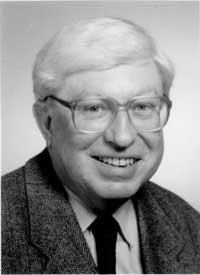German Gerhard Ertl to receive Nobel Prize in Chemistry

If a solid participates in a chemical reaction, it will be located on the outside of the solid, on the surface. Sometimes the solid itself reacts and, other times, binds the molecules that must react to the reaction between them, in which case we call catalyst. However, there are many reactions on the surface of the solid. For example, a piece of iron begins to turn from the outside, as only the iron atoms on the surface can be in contact with the oxygen in the air. Although solid is dust, the reaction occurs on the surface of dust grains.
The fact that it occurs on a surface provides special characteristics to chemical reactions and are very difficult to investigate. On the one hand, very clean and regular surfaces are required, and on the other, very precise techniques to study the dynamics of molecules approaching the surface. It is in this area that the German chemist Gerhard Ertl acquired relevance. He developed the most widely used methodology for the research of chemical reactions in solids. This methodology has become a common practice in both research laboratories and industry.
Air nitrogen
Ertl investigated a typical process of the chemical fertilizer industry, the Haber-Bosch reaction, which transforms nitrogen into the air, reacting with hydrogen, into ammonia. For this it is necessary to use solid iron. It acts as a catalyst because nitrogen and hydrogen molecules must be adsorbed in iron to react to each other. If not, they do not react. Ertle described step by step how this process occurs: how nitrogen is adsorbed to iron, how hydrogen is adsorbed and how adsorbed atoms react. In addition, he described the dynamics of hydrogen not only with iron, but also with platinum, nickel and palladium.
However, the importance of Ertl is not limited to the Haber-Bosch reaction. His methodology combined theoretical modelling of molecules, advanced spectroscopic techniques and many laboratory procedures to highlight what was happening on the surface. These techniques have allowed to investigate many other solid processes, such as the semiconductor industry (electronics industry), fuel combustion optimization (automotive), etc. in a long etcetera.
Buletina
Bidali zure helbide elektronikoa eta jaso asteroko buletina zure sarrera-ontzian











